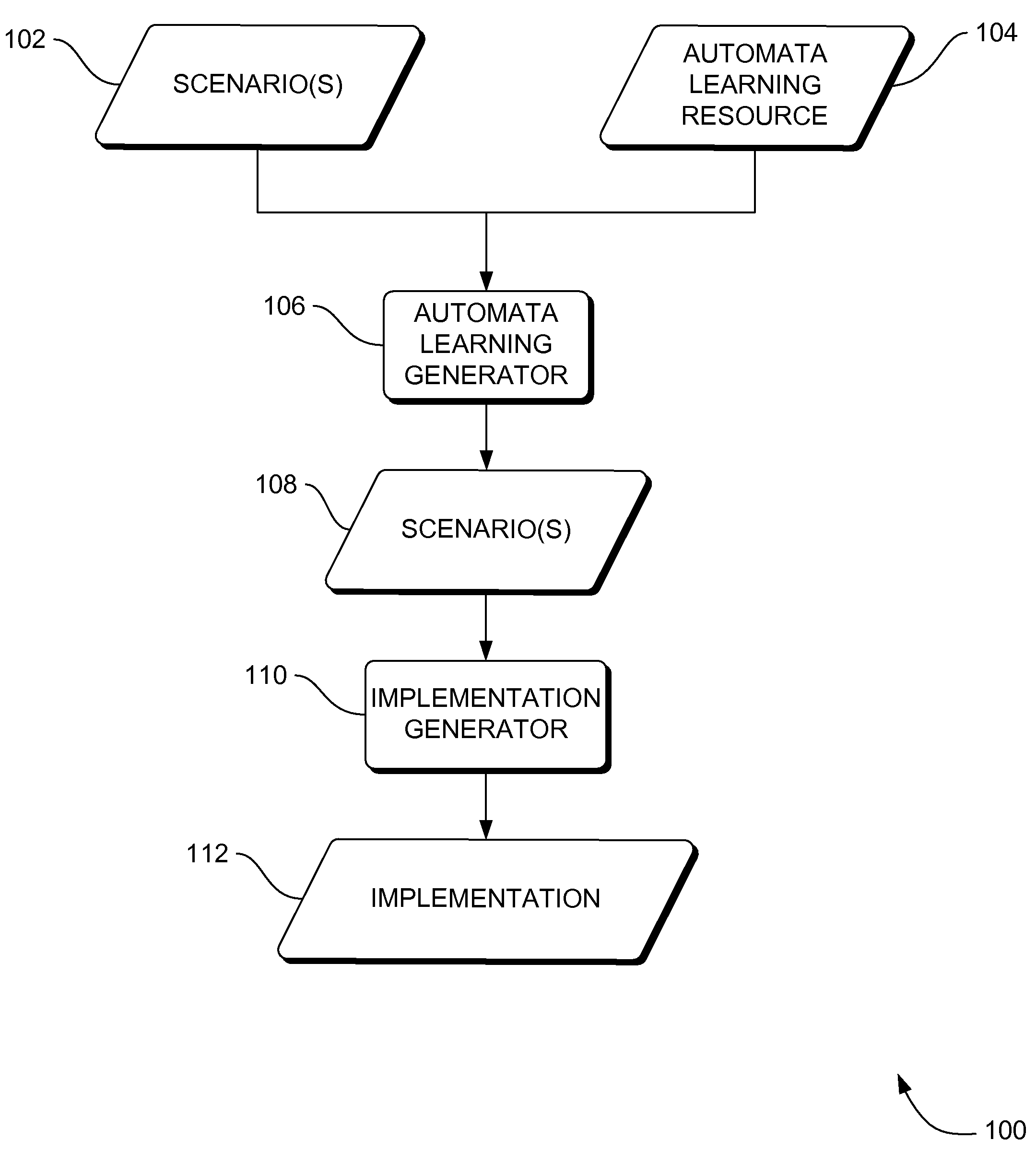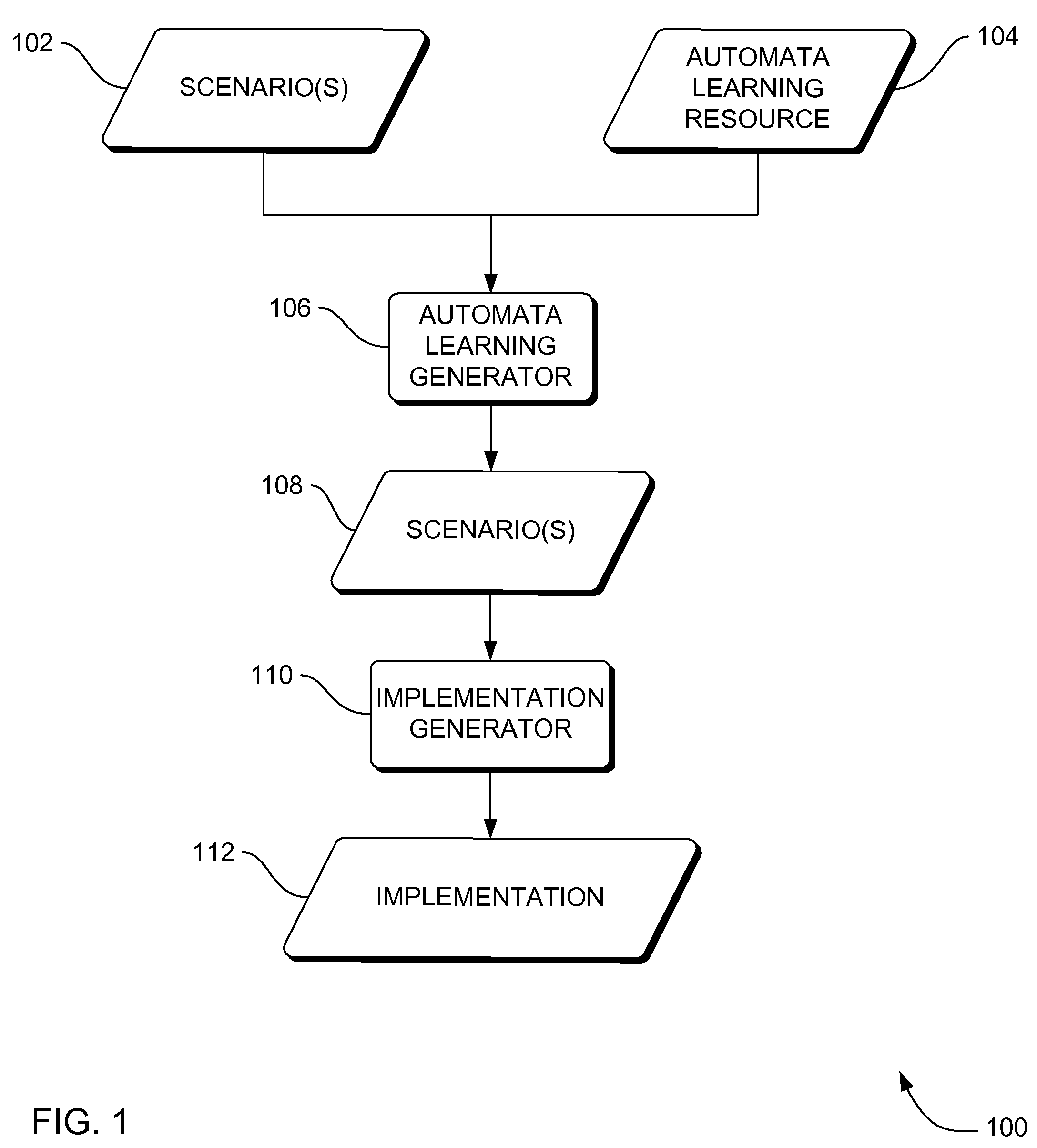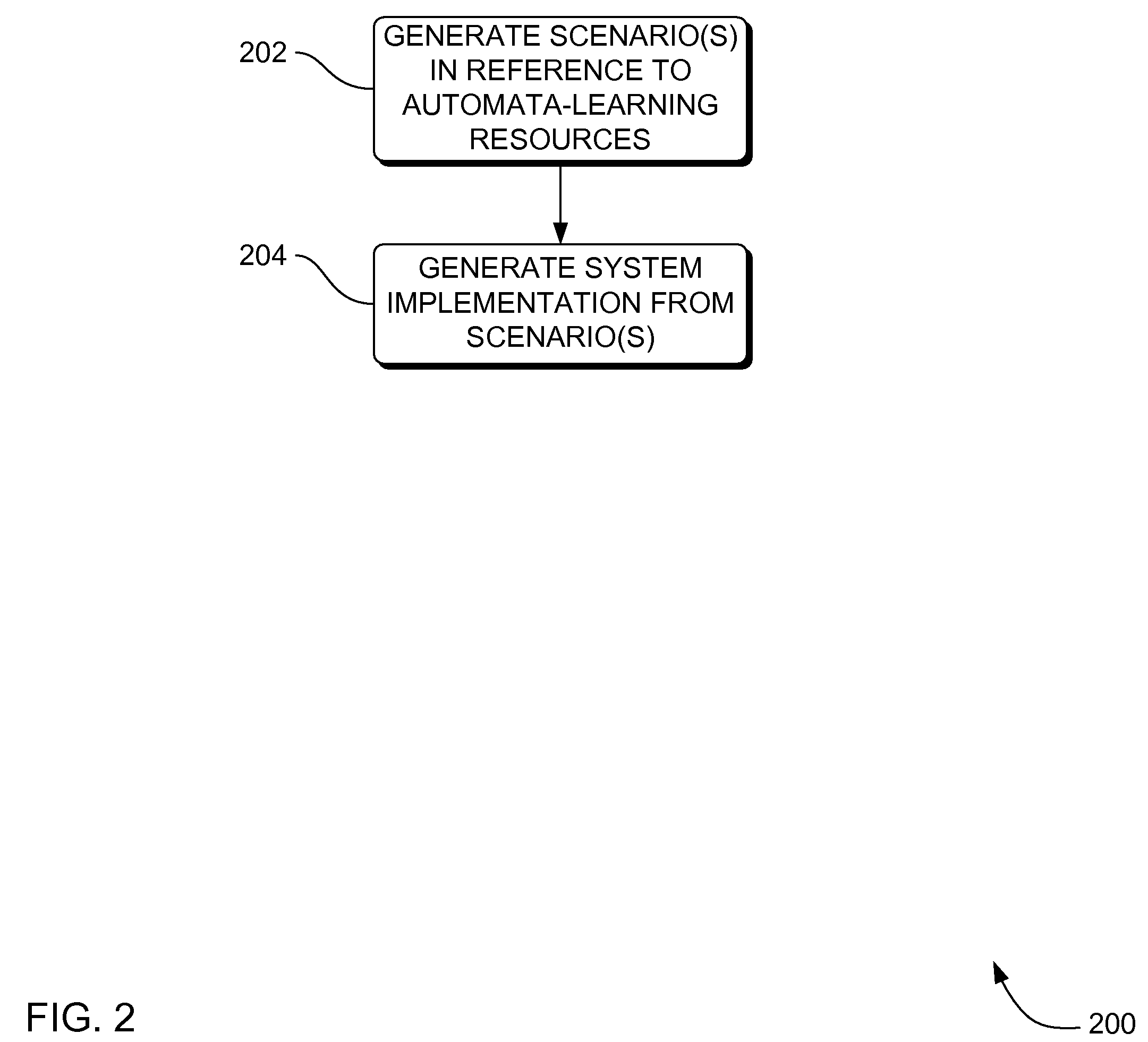Automata learning algorithms and processes for providing more complete systems requirements specification by scenario generation, CSP-based syntax-oriented model construction, and R2D2C system requirements transformation
a learning algorithm and system requirements technology, applied in the field of software development processes, can solve problems such as system design errors, complex systems in general cannot achieve high dependability, and difficult to fix
- Summary
- Abstract
- Description
- Claims
- Application Information
AI Technical Summary
Benefits of technology
Problems solved by technology
Method used
Image
Examples
Embodiment Construction
[0044]In the following detailed description, reference is made to the accompanying drawings that form a part hereof, and in which is shown by way of illustration specific embodiments which can be practiced. These embodiments are described in sufficient detail to enable those skilled in the art to practice the embodiments, and it is to be understood that other embodiments can be utilized and that logical, mechanical, electrical and other changes can be made without departing from the scope of the embodiments. The following detailed description is, therefore, not to be taken in a limiting sense.
[0045]The detailed description is divided into six sections. In the first section, an embodiment of a system level overview is described. In the second section, embodiments of methods are described. In the third section, an embodiment of the hardware and the operating environment in conjunction with which embodiments can be practiced is described. In the fourth section, particular CSP implement...
PUM
 Login to View More
Login to View More Abstract
Description
Claims
Application Information
 Login to View More
Login to View More - R&D
- Intellectual Property
- Life Sciences
- Materials
- Tech Scout
- Unparalleled Data Quality
- Higher Quality Content
- 60% Fewer Hallucinations
Browse by: Latest US Patents, China's latest patents, Technical Efficacy Thesaurus, Application Domain, Technology Topic, Popular Technical Reports.
© 2025 PatSnap. All rights reserved.Legal|Privacy policy|Modern Slavery Act Transparency Statement|Sitemap|About US| Contact US: help@patsnap.com



